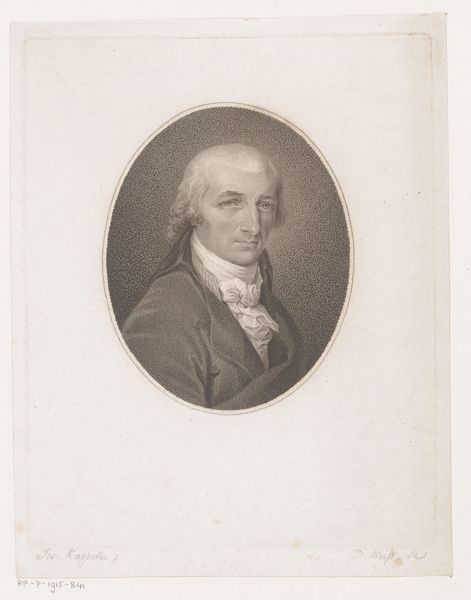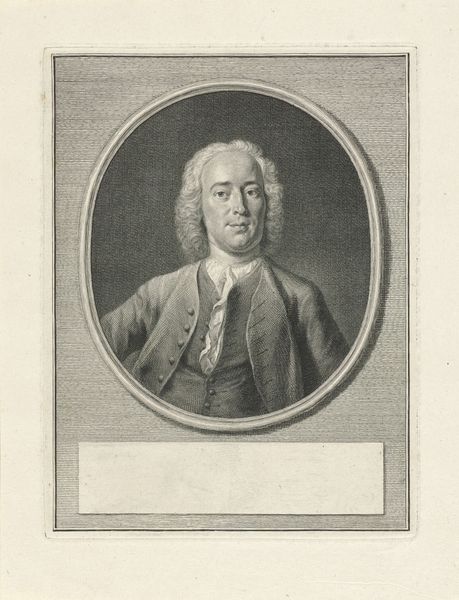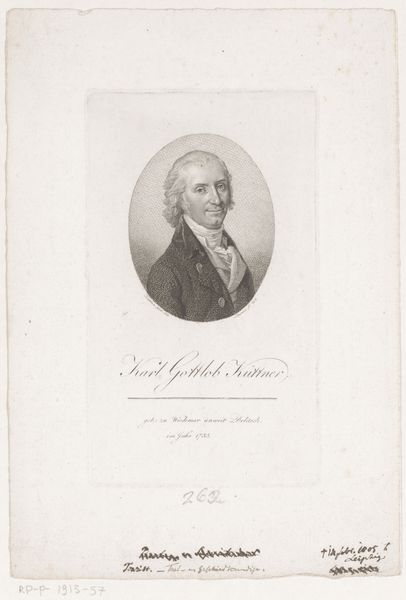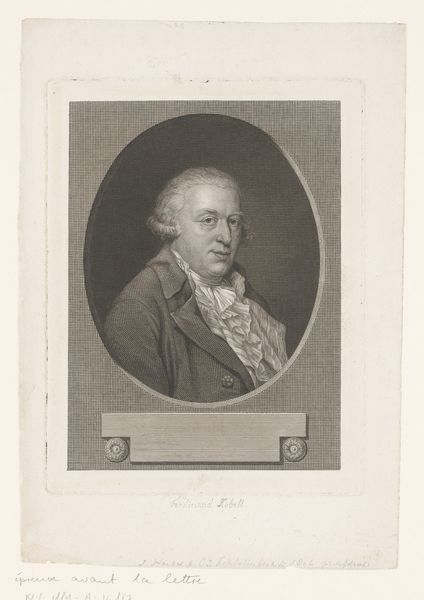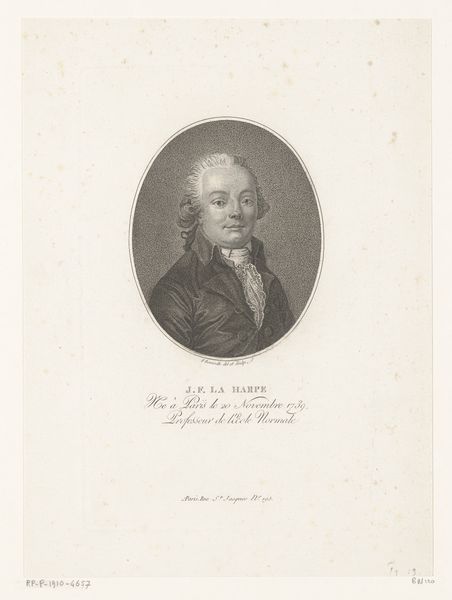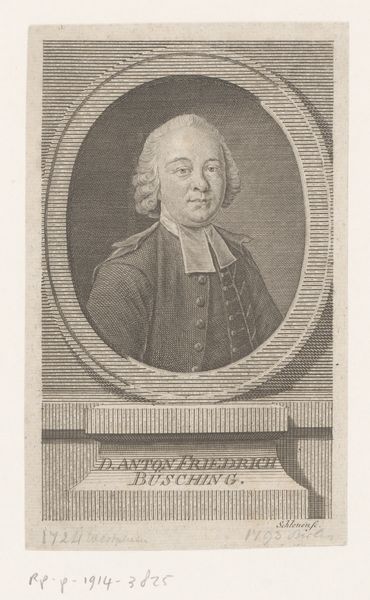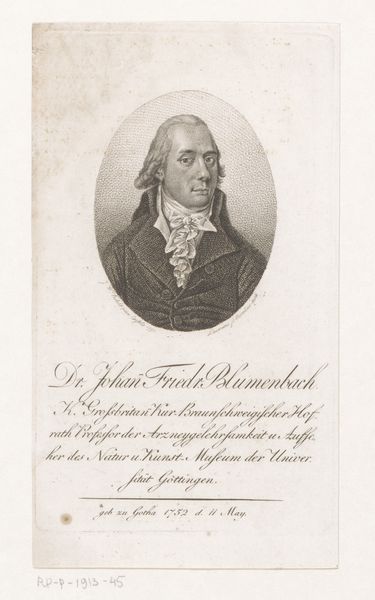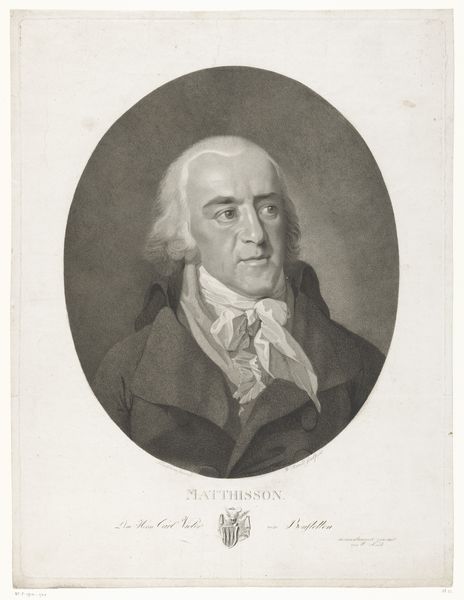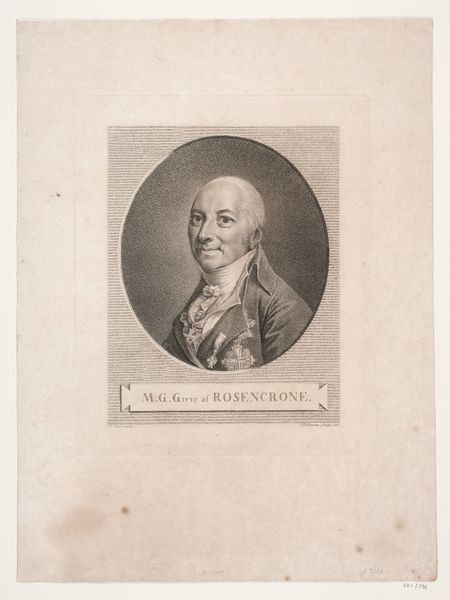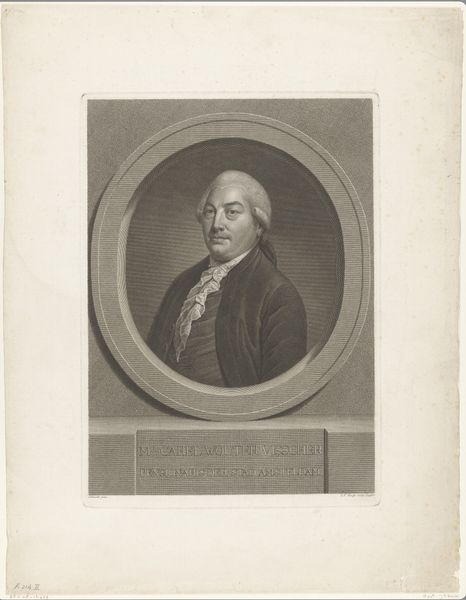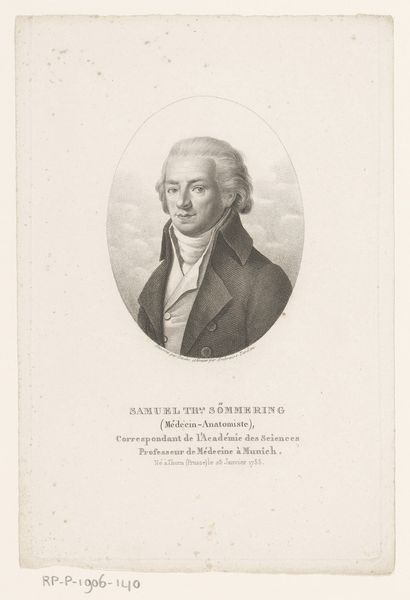
drawing, engraving
#
portrait
#
drawing
#
neoclacissism
#
old engraving style
#
engraving
Dimensions: height 153 mm, width 97 mm
Copyright: Rijks Museum: Open Domain
Editor: This is a portrait of Friedrich von Matthisson from 1798. It’s an engraving, a type of drawing, and is housed here at the Rijksmuseum. There's a certain formality to it, almost stiff. What stands out to you in this piece? Curator: What immediately grabs me is how this image functions within the larger social and political landscape of the late 18th century. Portraiture during this period was deeply entwined with power, status, and the construction of identity. To understand this Matthisson portrait, we need to ask: who was he, and why was his image being circulated in this way? Editor: Matthisson was a poet, right? Does that change how we should view the portrait? Curator: Absolutely. Think about how Romanticism was gaining traction at this time. Portraits of artists and intellectuals like Matthisson played a role in shaping a cult of personality. The act of creating and distributing such an image elevated him within cultural sphere. But consider this too: was this image intended for the general public, or was it targeted at a more refined audience who shared specific political or artistic leanings? Editor: So, it's less about Matthisson's actual likeness and more about what his image represents culturally? Curator: Precisely. It's about how this image participated in constructing a particular idea of "the artist" and about solidifying his place within a certain societal echelon. The print medium itself implies broader distribution, expanding the circle of those consuming this crafted image. Editor: That makes me think differently about all those portraits from this period! Curator: And it’s important to see how Neoclassicism as a style reflects that desire for order, perhaps a visual reaction to the shifting social landscape following the French Revolution, which definitely influenced art’s public role. Editor: I never really considered the political and social influence of imagery; this gives me a new appreciation for it. Curator: And hopefully new research questions too. Considering the cultural context gives us a much deeper understanding of artworks.
Comments
No comments
Be the first to comment and join the conversation on the ultimate creative platform.


